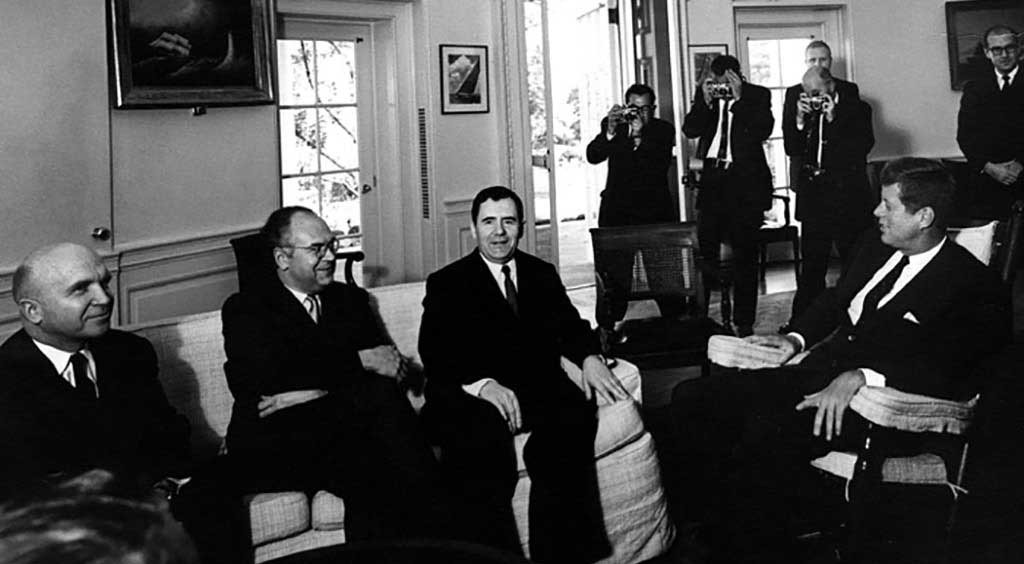14-28 Oct 1962
Soviet Union began secretly constructing nuclear missile sites in Cuba. American intelligence protested and there were fears of a possible nuclear war. The crisis ended with Russia’s retreat.
-

Kennedy Meets With Gromyko And Does Not Revela He’s Now Aware Of The Missile Build-Up. Unknown Photographer (1962)
Background
On 14 Oct 1962, an American spy plane U-2 noticed and took several photos of nuclear missile sites under construction in Cuba. They were close enough to the United States to fear for its safety.
President John F. Kennedy secretly discussed with his senior advisors weather to use force and occupy Cuba, or to give a warning signal to Khrushchev and resolve it with diplomatic means.
Events
Eight days later a naval blockade of Cuba was announced and Kennedy made a statement in television. Nobody knew what Khrushchev would do next and for another week the threat of nuclear war was in the air.
On 28 Oct 1962 Nikita Khrushchev declared they would withdraw their missiles from Cuba. In a secret protocol it was agreed that America will withdraw his nuclear missiles from Turkey in return.
Results
Tensions eased for that crisis, but the arms race continued. The direct result of the crisis was, that a universal telephone “hotline” between the presidents in Washington and Moscow was established. Also a Limited Nuclear Test Ban Treaty was signed in 1963.
The Soviet Union lost certain amount of reputation and Khrushchev had to pay for it two years later as he was deposed.
Cuban Missile Crisis
14-28 Oct 1962
Soviet Union began secretly constructing nuclear missile sites in Cuba. American intelligence protested and there were fears of a possible nuclear war. The crisis ended with Russia’s retreat.
Kennedy Meets With Gromyko And Does Not Revela He’s Now Aware Of The Missile Build-Up. Unknown Photographer (1962)
Background
On 14 Oct 1962, an American spy plane U-2 noticed and took several photos of nuclear missile sites under construction in Cuba. They were close enough to the United States to fear for its safety.
President John F. Kennedy secretly discussed with his senior advisors weather to use force and occupy Cuba, or to give a warning signal to Khrushchev and resolve it with diplomatic means.
Events
Eight days later a naval blockade of Cuba was announced and Kennedy made a statement in television. Nobody knew what Khrushchev would do next and for another week the threat of nuclear war was in the air.
On 28 Oct 1962 Nikita Khrushchev declared they would withdraw their missiles from Cuba. In a secret protocol it was agreed that America will withdraw his nuclear missiles from Turkey in return.
Results
Tensions eased for that crisis, but the arms race continued. The direct result of the crisis was, that a universal telephone “hotline” between the presidents in Washington and Moscow was established. Also a Limited Nuclear Test Ban Treaty was signed in 1963.
The Soviet Union lost certain amount of reputation and Khrushchev had to pay for it two years later as he was deposed.
Brezhnev's Stagnation